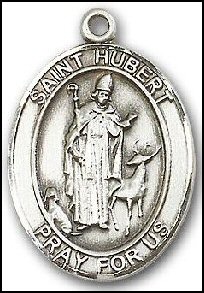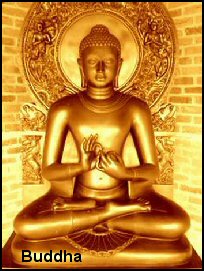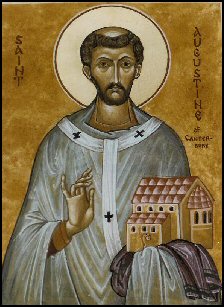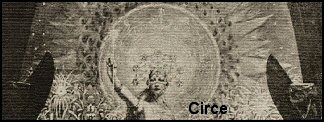SAINTS, SAINTS' DAYS, AND SUN WORSHIP SYMBOLS
| Chapter Four Read by Jogglers66 |
IN ADDITION TO the prayers and devotions
that are directed to Mary, Roman Catholics also honor and
pray to various "saints." These saints, according to
the Catholic position, are martyrs or other notable people
of the church who have died and whom the popes have
pronounced saints. In many minds, the word
"saint" refers only to a person who has attained some
special degree of holiness, only a very unique follower
of Christ. But according to the Bible, ALL true
Christians are saints--even those who may sadly lack
spiritual maturity or knowledge. Thus, the
writings of Paul to Christians at Ephesus, Philippi,
Corinth, or Rome, were addressed "to the saints"
(Eph.1:1, etc.). Saints, it should be noticed, were
living people, not those who had died.
|
If we want a "saint" to pray for us, it must
be a living person. But if we try to commune with people
that have died, what else is this but a form of
spiritualism? Repeatedly the Bible condemns all attempts
to commune with the dead (see Isaiah 8:19, 20). Yet many
recite the "Apostles' Creed" which says: "We believe...in the
communion o f saints," supposing that such includes the idea of
prayers for and to the dead. Concerning this very point,
The Catholic Encyclopedia says: "Catholic teaching regarding
prayers for the dead is bound up inseparably with the doctrine
... of the communion of saints which is an article of the
Apostles' Creed." Prayers "to the saints and martyrs
collectively, or to some one of them in particular" are
recommended. The actual wording of the Council of Trent is
that "the saints who reign together with Christ offer up their
own prayers to God for men. It is good and useful sup-pliantly
to invoke them, and to have recourse to their prayers, aid, and
help for obtaining benefits from God."
What are the objections to
these beliefs? We will let The Catholic Encyclopedia
answer for itself. "The chief objections raised against
the intercession and invocation of the saints are that these
doctrines are opposed to the faith and trust which we should
have in God alone--and that they cannot be proved from
Scriptures..." With this statement we agree. Nowhere do
the scriptures indicate that the living can be blessed or
benefited by prayers to or through those who have already
died. Instead, in many ways, the Catholic doctrines
regarding "saints" are very similar to the old sun worship ideas that
were held regarding the
"gods."Looking back again to the "mother" of false religion -- Babylon -- we find that the people prayed to and honored aplurality of gods. In fact, the Babylonian system developed until it had some 5,000 gods and goddesses. In much the same way as Catholics believe concerning their "saints", the Babylonians believed that their "gods" had at one time been living heroes on earth, but were now on a higher plane. "Every month and every day of the month was under the protection of a particular divinity." There was a god for this problem, a god for each of the different occupations, a god for this and a god for that.
From Babylon - like the
worship of the great mother--such concepts about the "gods"
spread to the nations. Even the Buddhists in China had
their "worship of various deities, as the goddess of sailors,
the god of war, the gods of special neighborhoods or
occupations." The Syrians believed the powers of certain
gods were limited to certain areas, as an incident in the
Bible records: "Their gods are gods of the hills; therefore
they were stronger than we; but let us fight against them in
the plain, and surely we shall be stronger than they" (1 Kings
20:23).
When Rome conquered the world,
these same ideas were very much in evidence as the following
sketch will show. Brighit was goddess of smiths and
poetry. Juno Regina was the goddess of womanhood and
marriage. Minerva was the goddess of wisdom,
handicrafts, and musicians. Venus was the goddess of sexual
love and birth. Vesta was the goddess of bakers and
sacred fires. Ops was the goddess of wealth. Ceres was
the goddess of corn, wheat, and growing vegetation. (Our word
"cereal", fittingly, comes from her name.) Hercules was the
god of joy and wine. Mercury was the god of orators and, in
the old fables, quite an orator himself, which explains why
the people of Lystra thought of Paul as the god Mercury (Acts
14:11,12). The gods Castor and Pollux were the protectors of
Rome and of travelers at sea ( Acts 28:11). Cronus was
the guardian of oaths. Janus was the god of doors and
gates. "There were gods who presided over every moment
of a man's life, gods of house and garden, of food and drink,
of health and sickness."
With the idea of gods and
goddesses associated with various events in life now
established in sun
worshiping Rome, it was but another step for these
same concepts to finally be merged into the church of
Rome. Since converts from sun worship were reluctant to part with their
"gods"--unless they could find some satisfactory counterpart
in Christianity--the gods and goddesses were renamed and
called "saints." The old idea of gods associated with
certain occupations and days has continued in the Roman
Catholic belief in saints and saints' days, as the following
table shows.
| Actors |
St. Genesius |
August 25 |
| Architects |
St. Thomas |
December 21 |
| Astronomers |
St. Cominic |
August 4 |
| Athletes |
St. Sebastain |
January20 |
| Bakers |
St. Matthew |
September 21 |
| Beggars |
St. Alexius |
July 17 |
| Booksellers |
St. John |
March 8 |
| Bricklayers |
St. Steven |
December 26 |
| Builders |
St. Vincent Ferrer |
April 5 |
| Butchers |
St. Hadrian |
September 28 |
| Cab drivers |
Flarce |
August 30 |
| Candle makers |
St. Bernard |
August 20 |
| Comedians |
St. Vitus |
June 15 |
| Cooks |
St. Martha |
July 29 |
| Dentists |
St. Appollonia |
February 9 |
| Doctors |
St. Luke |
October 18 |
| Editors |
St. John Bosco |
January 31 |
| Fishermen |
St. Andrew |
November 30 |
| Florists |
St. Dorothy |
February 6 |
| Hat makers |
St. James |
May 11 |
| Housekeepers |
At. Anne |
July 26 |
| Hunters |
St. Hubert |
November 3 |
| Laborers |
St. James |
July 25 |
| Lawyers |
St. Ives |
May 19 |
| Librarians |
St. Jerome |
September 30 |
| Merchants |
St. Francis of Assisi |
October 4 |
| Miners |
St. Barbara |
December 4 |
| Musicians |
St. Cecillia |
November 22 |
| Notaries |
St. Mark |
April 25 |
| Nurses |
St. Catherine |
April 30 |
| Painters |
St. Luke |
October 18 |
| Pharmacists |
St. Gemma Galgani |
April 11 |
| Plasterers |
St. Bartholomew |
August 24 |
| Printers |
St. John of God |
March 8 |
| Sailors |
St. Brendan |
May16 |
| Scientists |
St. Albert |
November 15 |
| Singers |
St. Gregory |
March 12 |
| Steel workers |
St. Eliguis |
December 1 |
| Students |
St. Thomas Aquinas |
March 7 |
| Surgeons |
S.S. Cosmas &
Damian |
September 27 |
| Tailors |
St. Boniface |
September 21 |
|
|
 to days, occupations, and the various needs of
human life.
to days, occupations, and the various needs of
human life. But
why pray to saints when Christians have access to God?
Catholics are taught that through praying to saints, they may
be able to obtain help that God otherwise might not
give! They are told to worship God and St.Hubert, patron of hunters,
then to "pray, first to with St.Elizabeth. Saint Mary, and the
holy apostles, and the holy martyrs, and all God's saints ....
to consider them as friends and protectors, and to implore
their aid in the hour of distress, with the hope that God
would grant to the patron what he might otherwise refuse to
the supplicant."
St.Hubert was born
about 656 and appeared on our list as the patron saint of
hunters and healer of hydrophobia. Before his
conversion, almost all of his time was spent hunting. On a
Good Friday morning, according to legend, he pursued a large
stag which suddenly turned and he saw a crucifix between its
antlers and heard a voice tell him to turn to God. He
is now designated as the patron saint of hunters and healer
of hydrophobia.
Many
of the old legends that had been associated with the sun worship gods were
transferred over to the saints. The Catholic
Encyclopedia even says these "legends repeat the conceptions
found in the pre-Christian religious tales ... The legend is
not Christian, only Christianized ... In many cases it has
obviously the same origin as the myth ... Antiquity traced
back sources, whose natural elements it did not understand, to
the heroes; such was also the case with many legends of the
saints ... It became easy to transfer to the Christian martyrs
the conceptions which the ancients held concerning their
heroes. This transference was promoted by the numerous
cases in which Christian saints became the successors of local
deities, and Christian worship supplanted the ancient local
worship. This explains the great number of similarities
between gods and saints."
As sun worship and
Christianity were mixed together, sometimes a saint was given
a similar sounding name as that of the sun worship god or goddess
it replaced. The goddess Victoria of the Basses-Alpes
was renamed as St.Victoire, Cheron as St.Ceranos, Artemis as
St.Artemidos, Dionysus as St.Dionysus, etc. The goddess
Brighit (regarded as the daughter of the sun god and who was
represented with a child in her arms) was smoothly renamed as
"Saint Bridget." In sun
worship days, her chief temple at Kildare was served
by Vestal Virgins who tended the sacred fires. Later her
temple became a convent and her vestals, nuns. They
continued to tend the ritual fire, only it was now called
"St.Bridget's fire."
The
best preserved ancient temple now remaining in Rome is the
Pantheon which in olden times was dedicated (according to the
inscription over the portico) to "Jove and all the
gods." This was reconsecrated by Pope Boniface IV to
"The Virgin Mary and all the saints." Such practices were not
uncommon. "Churches or ruins of churches have been frequently
found on the sites where sun
worship shrines or temples originally stood ... It is
also to some extent true that sometimes the saint whose aid
was to be invoked at the Christian shrine bore some outward
analogy to the deity previously hallowed in that place.
Thus in Athens the shrine of the healer Asklepios ... when it
became a church, was made sacred to the two saints whom the
Christian Athenians invoked as miraculous healers, Kosmas and
Damian."
A
cave shown in Bethlehem as the place in which Jesus was born,
was, according to Jerome, actually a rock shrine in which the
Babylonian god Tammuz had been worshiped. The scriptures
never state that Jesus was born in a cave.
Throughout the Roman Empire, sun
worship died in one form, only to live again within
the Roman Catholic church. Not only did the devotion to
the old gods continue (in a new form), but the use of statues
of these gods as well. In some cases, it is said, the very
same statues that had been worshiped as sun worship gods were
renamed as Christian saints. Through the centuries, more
and more statues were made, until today there are churches in
Europe which contain as many as two, three, and four thousand
statues. In large impressive cathedrals, in small
chapels, at wayside shrines, on the dashboards of
automobiles--in all these places the idols of Catholicism may
be found in abundance.
The
use of such idols within the Roman Catholic Church provides
another clue in solving the mystery of modern Babylon; for, as
Herodotus mentioned, Babylon was the source from which all
systems of idolatry flowed to the nations. To link the
word "idols" with statues of Mary and the saints may sound
quite harsh to some. But can this be totally incorrect?
It is admitted in
Catholic writings that at numerous times and among
various people, images of the saints have been worshiped in superstitious ways.
Such abuses, however, are generally placed in the past.
It is explained that in this enlightened age, no educated
person actually worships the object itself, but rather what
the object represents. Generally this is true. But
is this not also true of heathen tribes that use idols
(unmistakably idols) in the worship of demon-gods? Most
of these do not believe the idol itself is a god, but only
representative of the demon--god they worship.
Several articles within The Catholic Encyclopedia seek to
explain that the use of images is proper on the basis of them
being representative of Christ or the saints. "The honor
which is given to them is referred to the objects which they
represent, so that through the images which we kiss, and
before which we uncover our heads and kneel, we adore Christ
and venerate the saints whose likenesses they are." Not
all Christians are convinced, however, that this "explanation"
is strong enough reason to bypass verses such as Exodus 20:4,
5: "Thou shalt not make unto thee any graven image, or any
likeness of anything that is in heaven above, or that is in
the earth beneath, or that is underneath the earth: Thou shalt
not bow down thyself to them."
In
the Old Testament, when the Israelites conquered a heathen
city or country, they were not to adopt the idols of these
people into their religion. Such were to be destroyed, even
though they might be covered with silver and gold! "The graven
images of their gods shall ye burn with fire; thou shalt not
desire the silver or gold that is on them, nor take it unto
thee, lest thou be snared therein; for it is an abomination to
the Lord" (Deut.7:25). They were to "destroy all their
pictures" of sun worship
gods also (Numbers 33:52). To what extent these
instructions were to be carried out under the New Testament
has been often debated over the centuries. The Catholic
Encyclopedia gives a historical sketch of this, showing how
people fought and even died over this very issue, especially
in the eighth century. Though upholding the use of
statues and 
 pictures, it says "there seems to
have been a dislike of holy pictures, a suspicion that their
use was, or might become, idolatrous,
among certain Christians for many centuries," and mentions
several Catholic bishops who were of this same opinion.
For people to fight and kill each other over this issue -
regardless of which side they were on - was unmistakably
contrary to the teachings of Christ.
pictures, it says "there seems to
have been a dislike of holy pictures, a suspicion that their
use was, or might become, idolatrous,
among certain Christians for many centuries," and mentions
several Catholic bishops who were of this same opinion.
For people to fight and kill each other over this issue -
regardless of which side they were on - was unmistakably
contrary to the teachings of Christ.

 pictures, it says "there seems to
have been a dislike of holy pictures, a suspicion that their
use was, or might become, idolatrous,
among certain Christians for many centuries," and mentions
several Catholic bishops who were of this same opinion.
For people to fight and kill each other over this issue -
regardless of which side they were on - was unmistakably
contrary to the teachings of Christ.
pictures, it says "there seems to
have been a dislike of holy pictures, a suspicion that their
use was, or might become, idolatrous,
among certain Christians for many centuries," and mentions
several Catholic bishops who were of this same opinion.
For people to fight and kill each other over this issue -
regardless of which side they were on - was unmistakably
contrary to the teachings of Christ. The
sun worshipers placed
a circle or aureole around the heads of those who were "gods"
in their pictures. This practice continued right on in the art
of the Romish church. The accompanying picture is the way
St.Augustine is shown in Catholic books - with a circular disk
around his head. All Catholic saints are pictured this
same way. But to see that this practice was borrowed from
heathenism, we need only to notice the picture of Buddha(right)
which also features the circular symbol around his head! The
artists and sculptors of ancient Babylon used the disk or
aureola around any being they wished to represent as a god or
goddess. The Romans depicted Circe, the sun worship goddess of
the sun, with a
circle surrounding her head. From its use in sun worshiping Rome, the
same symbolism passed into papal Rome and has continued to
this day, as evidenced in thousands of paintings of Mary and
the saints. Pictures, supposedly of Christ, were painted
with "golden beams" surrounding his head. This was exactly the
way the sun god of the sun worshipers had been represented for
centuries.

Drawings of
Catholic saints are commonly pictured with a circle
or aureole around
their heads. So did the artists and sculptors
of ancient Babylon around the head of any being they wished to
represent as a god or goddess! The Romans depicted Circe, the goddess of
the sun, with a circle surrounding her head.
While not a major point in itself, a comparison of the
drawings of Circe, Buddha, and St. Augustine--each with a
circular symbol around their heads --shows that this usage was
influenced by pre--Christian custom.
The
church of the first four centuries used no pictures of
Christ. The scriptures do not give us any description of
the physical features of Jesus whereby an accurate painting
could be made of him. It seems evident, then, that the
pictures of Christ, like those of Mary and the saints, have
come from the imaginations of artists. We only have to make a
short study of religious art to find that in different
centuries and among different nationalities, many pictures of
Christ--some very different--may be found. Obviously all
of these cannot be what he looked like. Besides, having
now ascended into heaven, we no longer know him "after the
flesh" (2 Cor.5:16), having been "glorified" (John 7:39), and
with a "glorious body" (Phil.3:21), not even the best artist
in the world could portray the King in his beauty. Any
picture, even at its best, could never show how wonderful he
really is!
“Signs and symbols rule the
Sun Worship world, not words nor laws.”
www.granddesignexposed.com
www.granddesignexposed.com